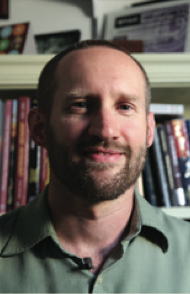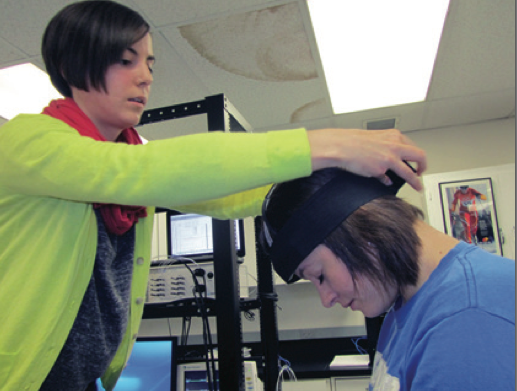
The UO is helping the Department of Defense (DOD) protect our soldiers.
Consider the physiological risks on the battlefield: Improvised explosive devices that cause concussive brain dysfunctions; combat engagements that bring knee and shoulder injuries or failures of the cardiovascular system; even acute mountain sickness and problems associated with extremely hot climates.
Researchers in the Department of Human Physiology regularly break new ground in those areas. And they do it with equipment paid for by the defense department, which anticipates real-world applications for the scientists’ work, both on and off the battlefield.

“A lot of the things we’re studying have a nice linkage to the sorts of problems our soldiers face,” said professor John Halliwill (left), who studies the ways cardiovascular and respiratory systems adapt to exercise and other stresses.
In the last two years alone, the defense department has funded equipment that allows UO researchers to track circulation in the arteries and measure cerebral blood flow and oxygenation, all in a noninvasive way while the subject is exercising to the point of exhaustion.
The defense department regularly awards tens of millions of dollars to universities such as the UO to buy equipment that helps the U.S. sustain a technological advantage. That equipment and the education it supports attract students who will become future DOD researchers and engineers, said Zachary Lemnios, assistant secretary of defense for research and engineering.
But the defense department is also interested in UO research that applies directly to military personnel. Assistant professor Hans Dreyer, for example, studies skeletal muscle metabolism and function before, during and after knee surgery, as well as the influence of interventions on recovery. With defense department funding, the human physiology department purchased two near infrared, noninvasive tissue spectrometers that he uses to measure the effects of different treatments on muscle tissue.
“Dreyer’s research deals with knee surgeries that are common following combat or training injuries and can lead to long-term disability induced by military service and, thus, should be of interest to the DOD,” the university said, in applying for the funding.

In a recent demonstration in Halliwill’s lab, graduate student Alisha Lacewell (right) used a headband to attach the sensors of a tissue spectrometer to the forehead of UO junior Emily Zoltai. Zoltai’s task was simple: Pedal on a stationary bike as fast as possible for sixty seconds while researchers tracked blood flow to her brain.
Right: Alisha Lacewell prepares Emily Zoltai for a test that will involve pedaling a stationary bike at maximum speed for sixty seconds.
The equipment measures cerebral tissue oxygenation, which traditionally has been assessed by inserting a catheter into an artery or vein. Halliwill uses this noninvasive device to record what happens in the brain during recovery from exercise at the point fainting occurs—critical for testing countermeasures to passing out.
Each test ends just prior to the loss of consciousness, with Halliwill and support staff members closely monitoring the test subject’s status.
Going full-tilt for nearly a minute, “it feels like you’re pedaling through molasses,” Zoltai said afterward. “The first time I felt kind of awful but the second time I was fine.” Said Halliwill: “We stop the test before they actually faint. It can be a little nerve- wracking when you see the symptoms starting to develop.”
—Matt Cooper
Photo: Michael McDermott, Matt Cooper





 While reviled as a people, the Roma of Eastern Europe are revered for their music.
While reviled as a people, the Roma of Eastern Europe are revered for their music.

